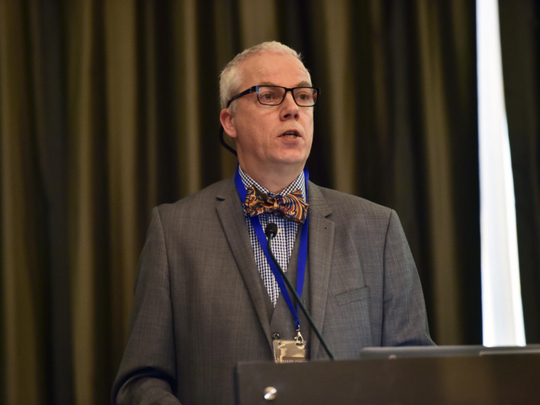
DUBAI
In 1940, Henry Ford predicted that science-fiction staple — the flying car — would come into production. Despite the attempts of Ford and others, no such vehicle has ever moved out of prototype.
The dangers of such predictions are perhaps why some of the world’s leading transportation modellers, who gathered this week for the Modelling World conference in Dubai, seem happier to talk of possibilities than probabilities.
Or perhaps it is because the old models of transportation built up through the 60s, 70s, 80s and 90s give little indication of what’s coming in the wake of digitisation, smart travel and the slow decline in car use.
“What’s interesting is that much of this change took place between 1997 and 2007,” Tom van Vuren, Divisional Director of Mott MacDonald’s Integrated Transport Executive and a Visiting Professor at the University of Leeds, UK, said of falling car usage. “This has had a significant impact on the problems of the car on society. And what’s interesting is to try and understand is whether this is a temporary thing or whether it will continue to impact the importance of the car.”
The skills of a transport modeller in making predictions are no longer about being right. They are, in the words of railway specialist Nigel Harris, about being “less wrong”. Harris’ wry observation, made in the context of his studies of a Scandinavian hyperloop system, an as-yet untried transport mode, may have wider relevance.
Transport modellers’ attempts to understand the changing nature of transport use are far from academic. Governments use their models to plan infrastructure, and developers to plan investments. The efficiency and quality of life of anyone who travels between home and workplace, whether by public or private transport, is affected by these specialists’ studies. Their work underlies the smooth transfer of people and goods locally, regionally and internationally.
The difficulty is in the number of variables in play. Though it seems logical that economic growth will lead to more travel, van Vuren pointed out in his presentation that “economic growth will not be a thin layer of jam across the whole of the population. Certain parts of the population see faster income growth than others.
“If this income growth distribution takes place among who already have a high car ownership then the impact of car-based demand will be much less, and if this economic growth takes place in those parts of the population where car ownership is low that economic growth will quickly translate into growth in car ownership.”
With road transport but one part of the field, which also encompasses air, rail and sea travel, and the complexity increases.
Transport modelling is, van Vuren agreed in an interview after his presentation, the kind of work that goes unnoticed when done well, but which becomes highly visible when mistakes happen.
Despite the difficulties, he did — with caveats — allow himself to be persuaded to make some predictions.
Despite the growing emphasis on self-driving cars, he expects regular cars to continue in use for at least 20 to 30 years simply because it will take time to replace fleets.
The growth in electric vehicles will depend not only on the availability of charging points but capacity of electricity grids to support those charging points.
Nevertheless, autonomous and electric vehicles, alongside increasing digitisation, may lead to shared or communal ownership — instead of having your own car parked outside your home ready for use, you summon a self-driving car through an app.
This ties to a couple of transportation modelling buzzwords — Mobility as a Service (MaaS), similar to cloud computing’s concepts of shared server space; and what van Vuren described as the “Internet of Moving Things”.
“As the moment people find it difficult to consider, that mobility is not something that you own, that you need to decide it. [If] I need to be at work at 9 o’clock, I’m buying a service and somebody will provide me with the service so that I will be at work at 9. It’s not impossible for people to get their heads around.
“The concept of Mobility as a Service is really, really interesting in that it allows us to balance the kind of tools, modes, that are actually better from a societal perspective. You could think about mass transit being supported by Mobility as a Service, because it will get people to and from the mass transit in an easy way. to strengthen the case for mass transit.”











